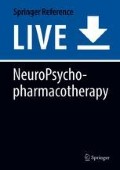Abstract
Cabergoline, an ergot dopamine agonist with a long elimination half-life, has been proved to be effective for treating Parkinson’s disease (PD) either as monotherapy in de novo patients or as an adjunct to levodopa therapy in patients with advanced PD. Typically, cabergoline is the second choice when patients do not respond adequately to other antiparkinsonian drugs. In the United States, cabergoline is recommended for the treatment of hyperprolactinemic disorders, either idiopathic or because of pituitary adenomas. Clinicians should be aware of the risk of fibrosis, especially of the heart valves. Perhaps, the underlying mechanism for the development of fibrosis is associated with the activation of serotonin receptor subtype 5-HT2B. A meta-analysis reported that the risk of valvular regurgitation increased by 7.25 times in patients with PD taking cabergoline. Additionally, the mean cumulative dose of cabergoline was positively related to the odds ratio concerning valve regurgitation, although the possibility of developing valvular regurgitation is not excluded even with low dose of cabergoline. Thus, regular screening with echocardiography is imperative for the early detection of valvular dysfunction. Furthermore, chest X-rays, urine tests, and blood tests, including erythrocyte sedimentation rate and/or C-reactive protein, should be performed regularly. Currently, the recommended dose of cabergoline is up to 3 mg once daily.
References
Battaglia R, Strolin Benedetti M, Mantegani S, Castelli MG, Cocchiara G, Dostert P. Disposition and urinary metabolic pattern of cabergoline, a potent dopaminergic agonist, in rat, monkey and man. Xenobiotica. 1993;23:1377–89.
Bracco F, Battaglia A, Chouza C, Dupont E, Gershanik O, Marti Masso JF, et al. The long-acting dopamine receptor agonist cabergoline in early Parkinson’s disease: final results of a 5-year, double-blind, levodopa-controlled study. CNS Drugs. 2004;18:733–46.
De Vecchis R, Esposito C, Ariano C. Cabergoline use and risk of fibrosis and insufficiency of cardiac valves. Meta-analysis of observational studies. Herz. 2013;38:868–80.
Deuschl G, Vaitkus A, Fox GC, Roscher T, Schremmer D, Gordin A, et al. Efficacy and tolerability of entacapone versus cabergoline in parkinsonian patients suffering from wearing-off. Mov Disord. 2007;22:1550–5.
Högl B, Rothdach A, Wetter TC, Trenkwalder C. The effect of cabergoline on sleep, periodic leg movements in sleep, and early morning motor function in patients with Parkinson’s disease. Neuropsychopharmacology. 2003;28:1866–70.
Hutton JT, Koller WC, Ahlskog JE, Pahwa R, Hurtig HI, Stern MB, et al. Multicenter, placebo-controlled trial of cabergoline taken once daily in the treatment of Parkinson’s disease. Neurology. 1996;46:1062–5.
Inzelberg R, Nisipeanu P, Rabey JM, Orlov E, Catz T, Kippervasser S, et al. Double-blind comparison of cabergoline and bromocriptine in Parkinson’s disease patients with motor fluctuations. Neurology. 1996;47:785–8.
Japanese Society of Neurology. Treatment guidelines for Parkinson’s disease 2011 [Internet]. 2011. http://www.neurology-jp.org/guidelinem/parkinson.html
Katzenschlager R, Head J, Schrag A, Ben-Shlomo Y, Evans A, Lees AJ. Fourteen-year final report of the randomized PDRG-UK trial comparing three initial treatments in PD. Neurology. 2008;71:474–80.
Kim S, Thiessen PA, Bolton EE, Chen J, Fu G, Gindulyte A, et al. PubChem substance and compound databases. Nucleic Acids Res. 2016;44:D1202–13.
Kulisevsky J, Pagonabarraga J. Tolerability and safety of ropinirole versus other dopamine agonists and levodopa in the treatment of Parkinson’s disease: meta-analysis of randomized controlled trials. Drug Saf. 2010;33:147–61.
Kvernmo T, Härtter S, Burger E. A review of the receptor-binding and pharmacokinetic properties of dopamine agonists. Clin Ther. 2006;28:1065–78.
Marsden CD. Clinical experience with cabergoline in patients with advanced Parkinson’s disease treated with levodopa. Drugs. 1998;55(Suppl 1):17–22.
National Institute for Health and Care Excellence. Parkinson’s disease in adults [Internet]. 2017. https://www.nice.org.uk/guidance/ng71
Pritchett AM, Morrison JF, Edwards WD, Schaff HV, Connolly HM, Espinosa RE. Valvular heart disease in patients taking pergolide. Mayo Clin Proc. 2002;77:1280–6.
Rinne UK, Bracco F, Chouza C, Dupont E, Gershanik O, Marti Masso JF, et al. Cabergoline in the treatment of early Parkinson’s disease: results of the first year of treatment in a double-blind comparison of cabergoline and levodopa. The PKDS009 Collaborative Study Group. Neurology. 1997;48:363–8.
Romigi A, Stanzione P, Marciani MG, Izzi F, Placidi F, Cervellino A, et al. Effect of cabergoline added to levodopa treatment on sleep-wake cycle in idiopathic Parkinson’s disease: an open label 24-hour polysomnographic study. J Neural Transm. 2006;113:1909–13.
Stowe R, Ives N, Clarke CE, Deane K, Hilten V, Wheatley K, et al. Evaluation of the efficacy and safety of adjuvant treatment to levodopa therapy in Parkinson s disease patients with motor complications. Cochrane Database Syst Rev. 2010;(7):CD007166.
Steiger MJ, El-Debas T, Anderson T, Findley LJ, Marsden CD. Double-blind study of the activity and tolerability of cabergoline versus placebo in parkinsonians with motor fluctuations. J Neurol. 1996;243(1):68–72
Ulm G, Schuler P. Cabergoline versus pergolide: a video-blinded, randomised multicenter cross-over study. Aktuelle Neurol. 1999;26:360–5.
Xu J, Jian B, Chu R, Lu Z, Li Q, Dunlop J, et al. Serotonin mechanisms in heart valve disease II: the 5-HT2 receptor and its signaling pathway in aortic valve interstitial cells. Am J Pathol. 2002;161:2209–18.
Author information
Authors and Affiliations
Corresponding authors
Editor information
Editors and Affiliations
Section Editor information
Rights and permissions
Copyright information
© 2019 Springer Nature Switzerland AG
About this entry
Cite this entry
Tsuboi, T., Watanabe, H., Katsuno, M., Sobue, G. (2019). Cabergoline in the Treatment of Parkinson’s Disease. In: Riederer, P., Laux, G., Mulsant, B., Le, W., Nagatsu, T. (eds) NeuroPsychopharmacotherapy. Springer, Cham. https://doi.org/10.1007/978-3-319-56015-1_223-1
Download citation
DOI: https://doi.org/10.1007/978-3-319-56015-1_223-1
Received:
Accepted:
Published:
Publisher Name: Springer, Cham
Print ISBN: 978-3-319-56015-1
Online ISBN: 978-3-319-56015-1
eBook Packages: Springer Reference MedicineReference Module Medicine

